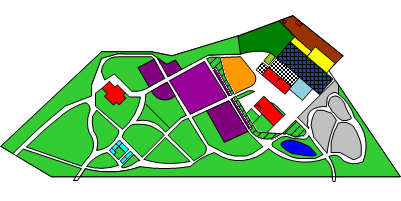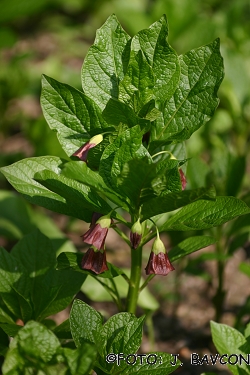



| NOME LATINO | Scopolia carniolica | |
|---|---|---|
| AUTORE | Jacq. | |
| NOME SLOVENO | kranjski volčič | |
| NOME ITALIANO | ||
| GENERE | Scopolia | |
| FAMIGLIA (LATINA) | Solanaceae | |
| FAMIGLIA (SLOVENO) | razhudnikovke | |
| ORDINE | Solanales | |
| CLASSE | Magnoliopsida | |
| PHYLUM | Magnoliophyta | |
| REGNO | Plantae | |
| FIORITURA | aprile - maggio | |
| PREVALENZA | Sr. in JV Evropa | |
| LISTA ROSSA | ||
| CITES | ||
| PIANTE CRESCONO IN ( | ||
 | ||
| PIANTE IMMAGINE |
|---|
 |
| Scopolia carniolica |
| Scopolia (Scopolia carniolica) is a plant blooming in beech forests in spring. At first a small plant, it quickly develops into a lush herb with nodding brown flowers hanging from under the leaves. The plant was brought to the world of botany from the area of the town of Idrija, where it was discovered by the town's first doctor, Johannes Antonius Scopoli (1723-1788). It was described even earlier, by Pietro Andrea Mathioli (1500-1577). Scopoli sent its seeds along with the first edition of his seminal work on Carniola's native flora, Flora Carniolica (1760), to the Swedish botanist Carl von Linné. In honour of Scopoli, Linné named the plant Hyoscyamus scopolia. In 1764, an all new genus, Scopola, was introduced in Scopoli's honour by the Viennese botanist Nicolaus Joseph von Jacquin. In the second edition of Scopoli's Flora Carniolica (1772), the plant was already classified as a species of the genus Scopola. Since then, its name has changed only slightly, into Scopolia carniolica. Text: J. Bavcon |
STABILIMENTO CON TRADIZIONE E CONOSCENZA DAL 1810!

IL GIARDINO BOTANICO FESTEGGIA - GUARDIANO DELLA BIODIVERSITÀ DA 214 ANNI!